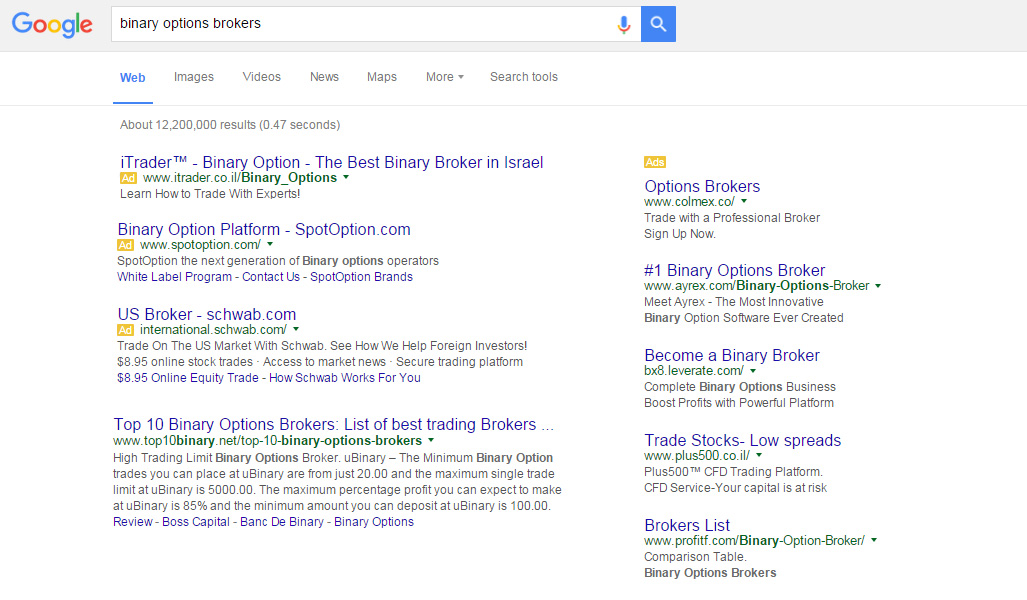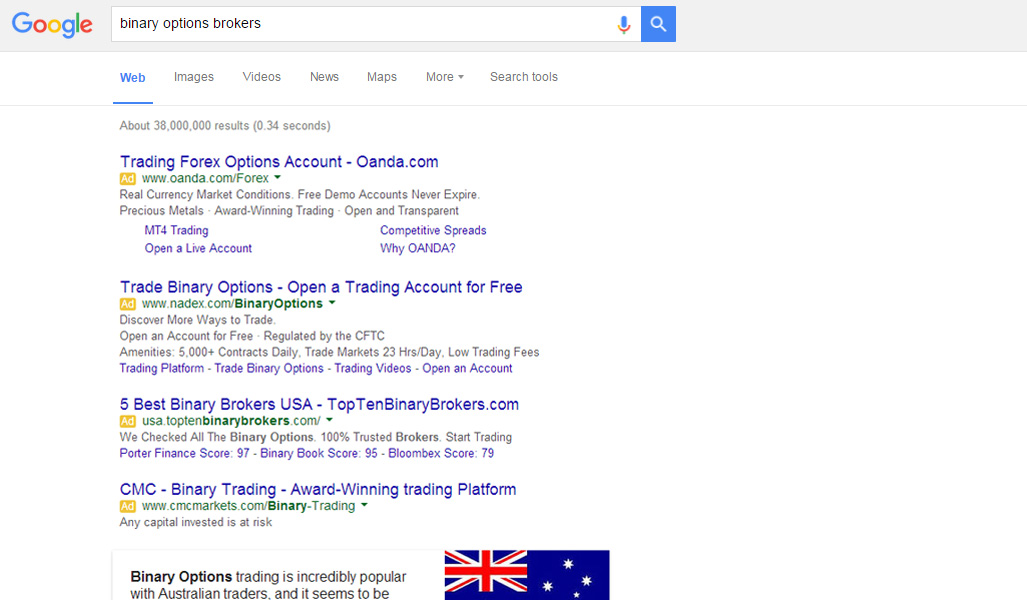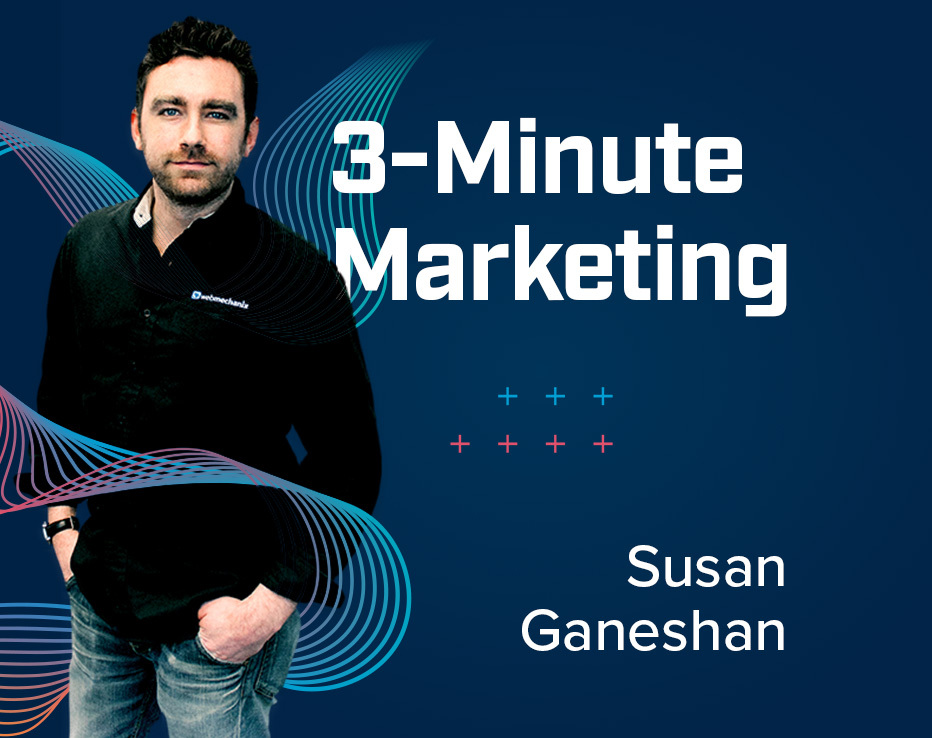
Google’s AdWord Position Update: 4 Ads on Top & None in Sidebar
Google recently made two big changes to the way search engine ads are positioned and displayed for desktop users.
- They added an extra ad position at the top of the search results page
- They eliminated the ad positions appearing to the right of the search results page


Prior to this change, Google would show 11 ads per search result page — 3 ads on the top of the page, 8 ads on the sidebar, and none at the bottom of the page. Now, they show 4 ads at the top of the page and 3 ads at the bottom.
That’s a reduction of almost 1/3rd of Google’s first page ad positions!
Removing 33% of the ad positions on the first page is expected to have a major impact on AdWords campaigns and search engine optimization. Most notably, the reduced advertising real estate will likely lead to more expensive bid and click costs. Similarly, less advertising means an increase in the value of SEO and high-ranking organic search results.
How This Might Affect Your SEM Campaigns
Right now the impact of the update on managing an AdWords account is to be determined. The change started to roll out globally on Monday, Feb. 22nd so we’ll have to wait on the data to see how it might affect your AdWords campaigns.
We’ll update this section as we discover more.
Other Details About The AdWords Position Update

While we wait on data to assess the impact the update has on search engine marketing, we can go over what we already know about the update.
The Update Targets Commercial Queries
This update was targeted at commercial queries. Here’s an official statement from Google about the change:
We’ve been testing this layout for a long time… We’ll continue to make tweaks, but this is designed for highly commercial queries where the layout is able to provide more relevant results for people searching and better performance for advertisers.
– Google AdWords spokesperson
When asked what a “commercial query” is, Google explained they are queries where people express “a strong intention to buy.”
But it should come as no surprise that this update is targeted for commercial queries — these types of queries are when people want to spend money so that’s what most all of advertisers are bidding on.
PLA Positions Outlive The Update
Product listing ads (PLAs) continue showing up on the right hand of the screen after the AdWords position update. In fact, more PLAs can now be shown because of the extra whitespace from where the sidebar ads used to be.
The Update Is Felt On a Global Scale
The AdWords position update described above is rolling out globally to all countries and will affect ads for all languages. This kind of universal change makes it seem like a significant departure of philosophy in the way Google’s search engine results pages are displayed.
Speculation About The AdWords Update

The best we can do now is speculate until we get more data or a more formal announcement from Google. So, let’s cast aside the need to anchor our analysis in reality and instead turn our attention to the endless world of opportunities in our imagination.
Higher Campaign Costs
Fewer ads on a page means more competition for the remaining ad positions; the same number of advertisers are still bidding, they’re just competing in fewer auctions. So to compensate, advertisers will need to spend more money to continue to appear in the rapidly-dwindling ad real estate.
Appraising the situation cynically, you might also note that 90+% of all of Google’s money comes from advertising. So, if Google was going to make a change to their golden goose, you’d expect them to account for reduced advertising opportunities.
Making the Web More Mobile-Friendly
This AdWord’s position update seems to create more consistency between desktop and mobile search results. And bridging the desktop-to-mobile gap has been item #1 on Google’s to-do list over the last few years.
Last year, mobile Google searches have officially overtaken desktop Google searches in the United States and several other countries. The problem with this is that mobile Google Search has largely been a shrink-rayed version of desktop Google Search. Sooner or later, they’ll need to evolve.
So, perhaps Google has decided that desktop Google searches will remain the model to follow. But to do that, they need to first make some changes. So perhaps they’re tinkering to discover a layout that will better lend itself across any device.
Antitrust Appeasement
Google faces constant scrutiny as an online advertising giant. In 2012, they found themselves under the FTC’s microscope for allegedly anticompetitive search display and rankings. The allegations didn’t amount to anything and the investigation was later withdrawn.
In 2013, the FTC sent a letter to Google and other search engines with updated guidance for ad disclosures. The issue at stake here was whether users were able to distinguish between paid advertisements and organic content. The FTC felt Google and other search engines had become too lax with their disclosure — the yellow indicating an ad isn’t yellow enough!
Even more recently, the European Union filed antitrust charges against Google relating to their shopping comparison service. The EU claims that Google unfairly positions and displays the shopping service. This “mistake” in ad positioning may cost Google $6 billion dollars in fines from the EU. Even Russia is jumping in on the action, bringing antitrust charges against Google for their contracts involving the Android OS and hardware manufacturers.
So how is Google handling the governmental scrutiny? Well, one way is by contesting the charges, which they’re doing now in the EU. The other way is through agreements and concessions — which they’ve done with the FTC and the EU already. So perhaps Google’s concessions were the catalyst for internal reimagining of the ad positions on the search engine results page..
After all, Google needs to become more mobile-friendly regardless and government threats can be a great a motivator. So why not kill two birds with one stone?
Making the Web Machine Learning-Friendly
Amit Singhal’s retirement means there’s a new head of search at Google — John Giannadrea. Giannadrea was in charge of machine learning at Google prior to becoming the head of search at Google. Machine learning has been slowly been added to other Google products — like Search, Photos, and more — so it seems to only be a matter of time before it makes it’s way into AdWords.
Although Google maintains that there is a strict wall between their team of employees working on their Search product and their teams working on other products, like AdWords, there still is some necessary interplay. And how AdWords ads are positioned on the Search page is an example of that interplay.
Regardless, how machine learning will ultimately be incorporated into Google’s AdWords network is is anybody’s guess. But much like how the RankBrain search engine update created a lot of hype yet had little immediate impact, the AdWords position update may be similar — big behind-the-scenes changes that lead to smaller immediate changes that pave the way for even more drastic future changes. Do what you can. Optimize the anatomy of your ad and prepare for the future.
Most newsletters suck...
So while we technically have to call this a daily newsletter so people know what it is, it's anything but.
You won't find any 'industry standards' or 'guru best practices' here - only the real stuff that actually moves the needle.
You may be interested in:
The antidote to treadmill marketing with Susan Ganeshan
December 22, 2021






